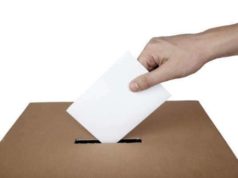
Because the electoral college system of America focuses on absolute majority and not plurality, it is possible for no candidate to win enough of the electoral vote to actually be declared President based purely on that election. In modern day America, there are 538 votes total in the electoral college system, and the majority of the electoral vote would require a given candidate to win 270 votes.
This number has, of course, fluctuated over the years, as the electoral vote would vary depending on the number of votes afforded to each state. Every state gets a number of votes in the electoral college system equal to the number of Representatives and Senators of that state.
As Representatives vary by state depending upon population, then the total number of votes in the electoral vote may vary from election to election, and in the years prior to America’s acceptance of the full 50 states, the number of votes necessary to win an absolute majority in the electoral college system was certainly lower. Regardless, however, it was always possible for no single candidate to win enough votes to earn an absolute majority in the electoral vote.
Primarily, the reason for this is because of the possibility of multiple parties and candidates. If each election only had two candidates, fully and in actuality, then all votes would be split between those two candidates. There might still be problems if not enough voters turned, out, theoretically, but this would affect the popular vote, and not the electoral vote, and as such, likely would not affect a candidate’s potential to earn an absolute majority in the electoral college system.
If a third candidate is introduced, however, then that candidate could very easily draw away some votes from the other two. If that candidate draws away just enough votes, then it is possible that neither of the other two candidates would be able to earn enough votes to obtain an absolute majority.
If there is a fourth candidate, then this situation only becomes more possible. Nowadays, it is unlikely for a third party to draw away enough of the electoral vote from the two primary parties, the Democratic Party and the Republican Party, and their candidates, to actually prevent one of those candidates from winning the presidential election. But in years past, this was certainly a possibility under the electoral college system, and it actually happened on two different occasions.
The original writers of the Constitution did foresee such a potential outcome, and provided for a way to solve it. In the event that no candidate has earned an absolute majority in the electoral vote, then the House of Representatives would hold a vote to determine the winner of the presidential election.
This might lead to some odd circumstances, in which the results of the electoral college system might be disregarded, insofar as the actual vote of the House of Representatives is concerned. While the House can only vote on the top three candidates from the electoral vote, meaning those three candidates who earned the most electoral votes, the House might still decide on a different President-elect than the candidate who earned the plurality of the electoral vote.
The system already allowed for a different candidate than the one who earned the majority of the popular vote to win the presidency, but through the possibility of this outcome, it is even possible for the electoral vote to have a minimal effect on the overall outcome of the election.
This system was refined after the election of 1800, with the introduction of the Twelfth Amendment, so as to avoid certain complications, and as such, the procedure for dealing with an absence of an absolute majority from the electoral vote is fairly clear. The procedure is not necessarily perfectly fair, but it is certainly functional, and its use in the election of 1824 shows that.









































